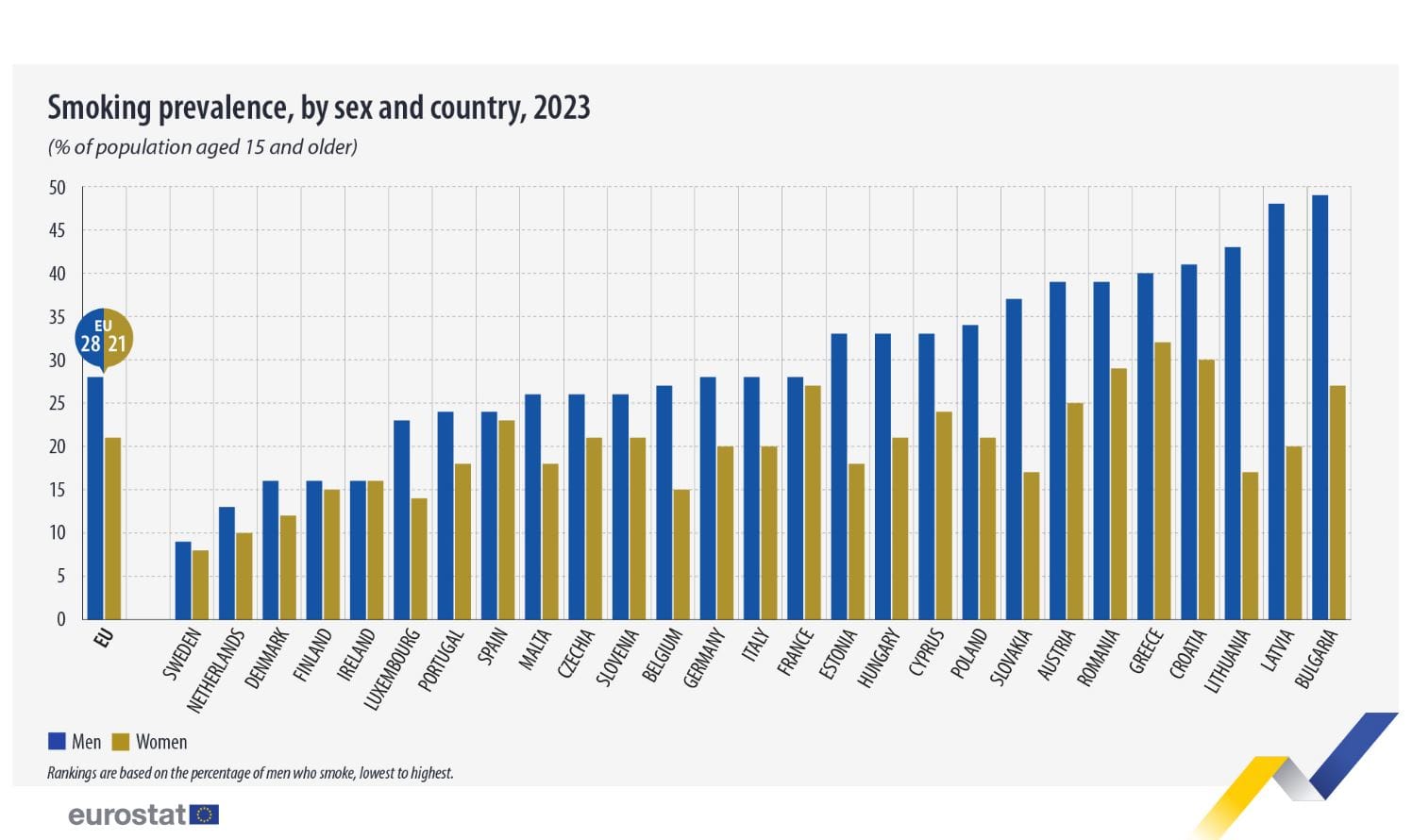Tobacco use drops globally but Europe lags behind other regions
Tobacco use continues to decline, but remains a major public health threat in Europe

The ‘WHO global report on trends in prevalence of tobacco use 2000–2024 and projections 2025–2030’ released on 6 October has some positive news. Since 2010, 120 million people have stopped using tobacco, however one in five adults remain addicted.
“Millions of people are stopping, or not taking up tobacco use thanks to tobacco control efforts by countries around the world,” said Dr Tedros Adhanom Ghebreyesus, WHO Director-General.
WHO is calling on governments to strengthen implementation of the WHO Framework Convention on Tobacco Control and the MPOWER measures. This includes raising tobacco taxes, banning advertising, regulating new nicotine products, and expanding cessation services.
“Nearly 20% of adults still use tobacco and nicotine products. We cannot let up now,” said Jeremy Farrar, WHO Assistant Director-General. “The world has made gains, but stronger, faster action is the only way to beat the tobacco epidemic.”
Europe lagging behind: Regional trends show sharp declines in South-East Asia, where male prevalence fell from 70% in 2000 to 37% in 2024. Europe now records the highest prevalence globally, with 24.1% of adults using tobacco, including the highest rate among women at 17.4%.
EU statistics on smoking prevalence of those aged fifteen and older collected by Eurostat show that in 2023, 24% of this group smoked, a decrease of only 2% points compared to 2017. The EU goal of creating a ‘Tobacco-Free Generation' by 2040, where less than 5% of the population uses tobacco seems to be out of reach without greater effort.
However the picture across the EU is very uneven. Sweden has the lowest share of smokers (8%), followed by Netherlands (11%) and Denmark (14%). Whereas, Bulgaria (37%), Greece (36%) and Croatia (35%) have the highest overall shares. Despite some common rules, the approach to tobacco cessation varies greatly and there is a clear east/west divide.
Looking at excise duty raised from cigarettes the countries that tax the most have lower levels of smoking, while the countries that tax least have the highest levels, suggesting that higher taxation is part of the solution.

Vaping: For the first time, WHO has estimated global e-cigarette use, finding more than 100 million users worldwide. The high number of adolescents aged 13 - 15 using these devices has started to cause alarm.
Ghebreyesus accused the tobacco industry of fighting back with new nicotine products, which are “aggressively targeting young people”. He called on governments to act faster in implementing proven tobacco control policies.
“E-cigarettes are fueling a new wave of nicotine addiction,” said Etienne Krug, WHO Director of Health Determinants, Promotion and Prevention. “They are marketed as harm reduction but, in reality, are hooking kids on nicotine earlier and risk undermining decades of progress.”
Gender differences: Women smoking prevalence fell from 11% in 2010 to 6.6% globally, with the number of female tobacco users dropping from 277 million to 206 million. In Europe, the highest smoking rates were recorded in Greece (32%), Croatia (30%) and Romania (29%).
A revision to the Tobacco Taxation Directive will be discussed by EU finance ministers on Friday.
